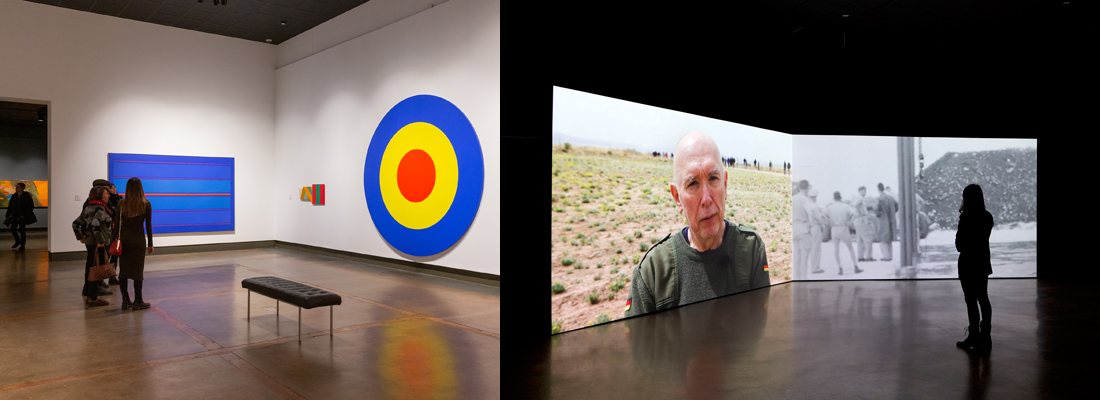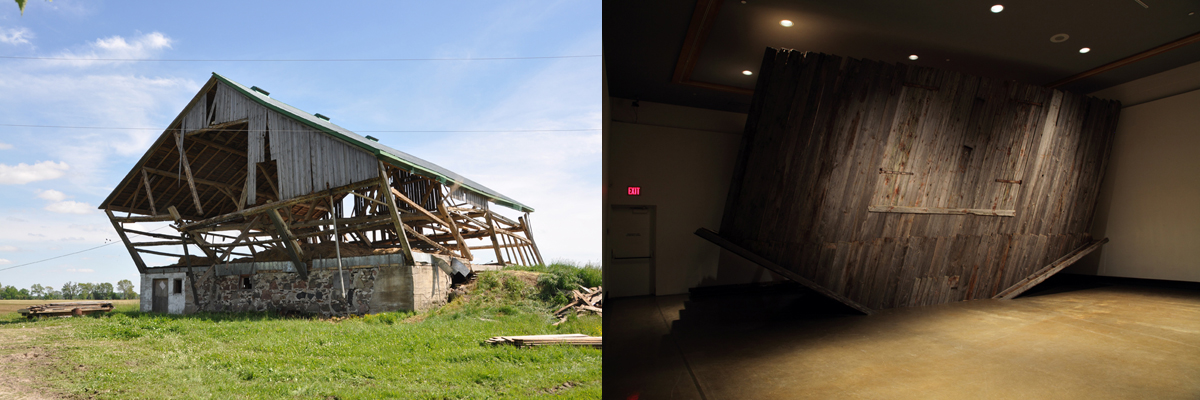Ever since the COVID-19 pandemic shuttered all cultural institutions and confined people to their homes, efforts have been raised world-wide to keep the arts alive through digital means. From livestreamed performances of theatre and music to virtual views of closed exhibitions, artists and the organizations that serve them – KWAG included - are adapting to sustain culture in a time of social distancing.
Artworks that can be conveyed in the digital realm have become powerful currency in this strange new time. As KWAG’s communications lead, I have become dependent on high-quality digital reproductions of artworks from our Permanent Collection and innovative projects like Aislinn Thomas’ audio work, A piece of cloth, held taut, to provide content that can be experienced and appreciated by our audiences at home.

These methods, however, cannot replace what we have truly lost – the physical experience of being present with a work of art that engages senses beyond sight. The internet can’t imitate the pulsating power of Claude Tousignant canvases in The Myth of Consensus that loom far larger than any human in the space, or the soothing flow of projector light gliding off polished concrete floors like the surface of a still lake when viewing Mary Kavanagh’s Trinity 3 in our Eastman Gallery. These sensory details ground these artworks in the real, and make them more memorable as a result.
When I interviewed for the job I now hold, one of the last questions I was asked was whether I had a favourite KWAG exhibition. A burst of giddy excitement got the better of me in that moment as the answer came to me without thought or hesitation: Ernest Daetwyler’s Reality in Reverse |LS|barn raising|RS| from KWAG’s 2010 exhibition season.

In Reality in Reverse |LS|barn raising|RS|, Daetwyler gathered the remains of a derelict barn near his home in Atwood, Ontario and enlisted the help of local Mennonite barn raisers to reconstruct an inverted model of the barn in KWAG’s Eastman Gallery. As the sole object in an otherwise dark space, this may sound like a relatively simple project and yet, as I wrote about this work in my independent art blog at the time, “there's something at work with Daetwyler's barn that transcends its conceptual labour and verges on the unnerving.”
When revisiting what I originally wrote about this work over nine years ago in my younger freelance days, I can see how Daetwyler’s installation implanted itself so effectively in my memory:
The reconstructed barn is the sole occupant of a darkened space that feels hushed even with the distant sound of scraping and sawing wood that I assumed was linked to the video of the barn's impending demise positioned at the gallery entrance. Leaving that video well out of the way was a smart move, as its absence heightens the strange presence of this slightly smaller than life barn that appears to have spontaneously materialized in a space too small to contain it.
The edges where the barn meets the floor and wall are convincingly fused together, as though the aged wood has forcibly impaled concrete and drywall to push itself beyond the parameters of the room. It's remarkably easy to ascribe that kind of power to this barn once you walk up close to its facade and realize that the barn had landed at a slight incline that sets the wall looming ominously above you, leaning in just enough to suggest the potential to tip the rest of the way forward and crush anyone in its way. With its imposing presence and the pervasive smell of sawdust echoing off those wood planks, this barn is unsettling alive, almost disturbing in its solidity. I literally had goosebumps crawling down my neck during most of my time in this room.
The smell of sawdust, the faint crackle of splitting wood, the physical closeness of that tilted wall – each of these are part of my memory of this artwork, and intangible elements that no digital document could convey. Even the communal quality of its creation – all those hands coming together to disassemble and rebuild this barn – feels nostalgic in the now of social distancing.
Acknowledging a part of what is lost in the digital artifacts of an artwork does not diminish what we can accomplish through sharing – an even older Ernest Daetwyler artwork I reposted last week on Instagram brought back fond memories for one follower who remembered playing in the exhibition as a child. That, too, has value. But recognizing the shortcomings of the tools at hand can be a meaningful first step to imagining other ways to engage with art in isolation.
Our new series of interviews with artists working from home, which we launched earlier this week with Erika DeFreitas, is one possible solution that candidly confronts the limitations of a pandemic – how it frustrates some creative processes, while opening new possibilities along the way. The more our daily lives change, the more vital it becomes that art adapts, in ways that are still being discovered along the way, to speak for this reality in reverse.
Stephanie Vegh is Manager, Media & Communications at the Kitchener-Waterloo Art Gallery.


